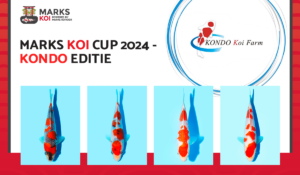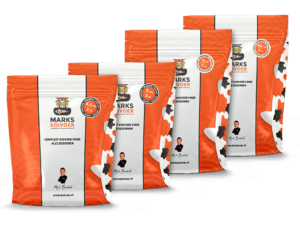As a koi keeper, you are naturally actively concerned with the living conditions of your koi. Koi are very sensitive fish. It is therefore important to keep a close eye on the water. Both the temperature and the chemical values of the water. It is advisable to measure the water temperature and the values of ammonia, nitrite, nitrate, KH, GH and phosphate at least once a month. You can read about the usefulness of measuring chemical water values in another blog, which will be published in 2023.
Water temperature
At what water temperature is it best to feed floating or sinking koi food?
Protect the pond from too low a temperature
How quickly the water temperature cools or warms depends on the content of your pond. A large pond is less likely to fluctuate with air temperatures during the day or night, than a small pond. It is important that the minimum water temperature does not fall below the critical temperature of 4ºC in any case. This can generally already be achieved by covering the pond with a pond cover in winter. Another choice is to possibly heat the pond.

Risk of disease in spring
In spring, the risk of fluctuating water temperatures is greatest, as koi are weakened during the winter months. Temperature fluctuations cause stress, and stress makes the koi more susceptible to parasites. When designing the pond, it is best to opt for the largest possible size and volume recommended depth is at least 1.5 metres and preferably 2 metres, to minimise fluctuations. Furthermore, a (large) part of the bacteria in your filter dies during the winter, which can cause ammonia and nitrite values to suddenly rise in the spring. This too causes stress to the koi. In case you don’t have a canopy or heated pond, we recommend keeping an eye on your koi as much as possible and when they start swimming again in spring, to have a health check. In addition, it is wise to add bacteria to the pond during the winter months and spring see bacteria blog.
Want to know more about koi health, pond construction and water quality management? Then contact Mark and send an email to info@carpcare.nl



